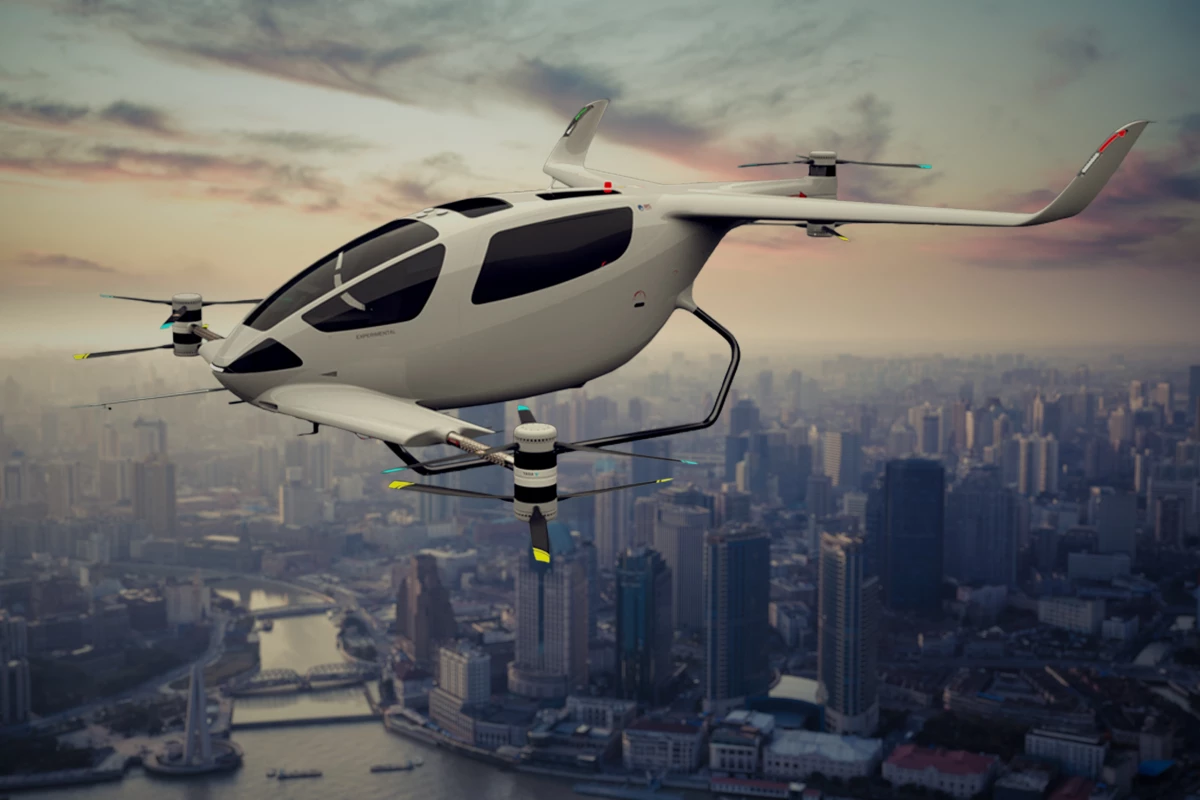UK company Autonomous Flight has been working on eVTOL concepts for some years now, with a full-scale airframe of its two-seat Y6S already built and small-scale prototypes already flight-tested and capable of transitioning from VTOL hover into horizontal flight. Now the company has revealed a six-seat air taxi – or perhaps air shuttle is a better way to describe it – called the Y6S Plus.
In the burgeoning ranks of companies working to build electric VTOL aircraft, we haven't seen a propulsion arrangement quite like this before. Autonomous Flight has gone for a tricopter layout, with two large coaxial rotors at the ends of the front canard wings, far enough away that they won't affect airflow over the wings, and a third coaxial rotor mounted at the rear of the aircraft, behind the large main wing.
Tricopters are relatively rare at the small-scale hobby drone end of the market. Here, they offer a weight advantage due to one less arm, motor and prop assembly, but in order to maintain yaw control they need to include a servo motor to tilt the rear prop. The coaxial rotors on the Y6S Plus remove the need for this rotor tilt, but it's still hard to figure out why the designers didn't go for two props at the back and a more traditional quadcopter design. Perhaps to reduce drag in forward flight once the rear props are switched off.
It certainly keeps the look fairly tidy, but one does have to wonder how much stability and control authority it'll allow with only three lift points. The front two rotors tilt forward once the aircraft's off the ground, bringing it to an efficient, winged horizontal flight mode that's good for cruise speeds around 125 mph (200 km/h).

Flying on lithium batteries, the range will be in the region of 80 miles (130 km), so it's certainly no long-hauler, and the use of landing skids rather than wheels suggests it'll be incapable of more efficient conventional takeoff and landing where the opportunity is available.
Autonomous Flight founder Martin Warner told Future Flight he doesn't expect on-call air taxi operations to be viable for at least 15 years – hence the oversized six-seat cabin. Early eVTOL operations, he feels, will work best as scheduled point-to-point shuttle services, and thus the more seats, the merrier for the operator's bottom line.
The short range offered by current lithium batteries can be less of an issue if these things are flying between friendly vertiports in a predictable fashion rather than responding to customer demand in real time; Warner is making the large battery packs swappable to keep these birds in the air and making money.

And despite the business name, the initial aircraft will indeed be piloted – not because it won't be able to fly itself, more because Warner anticipates that regulatory bodies will take a lot longer to permit it. You've got to feel for the pilots; imagine studying up, getting your eVTOL license and then interviewing for a pilot job at Autonomous Flight; I wouldn't be signing up for a mortgage on that gig.
Another one to watch as the air taxi market continues to expand and evolve.
Source: Autonomous Flight






